If you’ve ever experienced stomach pain after eating a low-quality meal, you are certainly not the only one. Most people will experience stomach distress at least once in their lives, and this condition accounts for over 9.6 million visits to emergency departments each year.
In most cases, mild stomach discomfort is temporary, and it can be treated with simple dietary or lifestyle adjustments. However, acute or persistent abdominal pain should never be overlooked. Sometimes, it can be a sign of an underlying serious condition that requires immediate medical attention.
Fortunately, you don’t have to endure the side effects of medications or put yourself through months of trial and error to find an efficient line of treatment. With Neuragenex Neurofunctional Pain Management, you can address the root of your stomach pain and restore your health without drugs or surgery. Here’s all you need to know.
Four Types Of Pain In The Stomach Area
Although pain in the stomach is an extremely widespread condition, not all types of stomach pain are equal.
Pain in your abdomen may be described as:
- Generalized: Generalized pain affects half of your stomach or more. Generalized stomach pain may be caused by indigestion, viruses, gas, or, in severe cases, blockages affecting the intestines.
- Cramps: This type of pain is often associated with digestive issues, and it may be accompanied by diarrhea, gas, and bloating.
- Colic: Colicky pain comes in waves, develops suddenly, and stops abruptly. It is often caused by contractions of the components of the abdomen, such as the intestine or gallbladder. This type of pain is often accompanied by sweating and vomiting, and it may indicate kidney stones or gallstones.
Your stomach pain can also be localized to a certain area of the abdomen. In this case, there may be a problem with one or more organs in your stomach. Understanding the anatomy of your abdomen can help you diagnose your stomach pain correctly and seek adequate care.
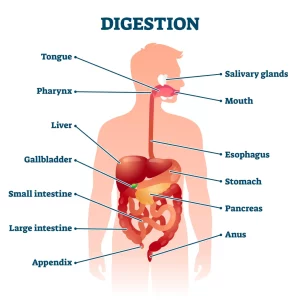
Thinking of your abdomen as subdivided into four quadrants, the area where you experience pain may indicate different diseases. Here’s an overview.
- Upper right quadrant: The right upper abdomen is where the bile ducts, gallbladder, right kidney, and liver, as well as parts of the small and large intestines, are located. Pain in the upper right quadrant may be related to hepatitis, gallstones, gallbladder inflammation (cholecystitis), kidney infections, kidney stones, and large bowel obstructions. It may also be a symptom of liver, gallbladder, or bile duct cancer.
- Upper left quadrant: The upper left abdomen houses the stomach, spleen, and pancreas. Adjacent to these organs are also the left kidney, the heart, and the left lung. Pain in this area may indicate stomach ulcers, stomach cancer, kidney stones and infections, gastritis, inflammation of the pancreas (pancreatitis), pancreatic cancer, or enlarged spleen (splenomegaly). If the pain stems from your chest, you may have angina, heartburn, heart attack, pneumonia, or pulmonary embolism, which are problems related to the heart or lungs.
- Lower right quadrant: The lower abdomen houses the small and large intestines. Pain in this area usually indicates problems related to gastrointestinal diseases, as well as to the ureters, uterus, or ovaries. In particular, if the pain is felt on the lower right side of your abdomen, it may indicate problems with the appendix, such as appendicitis or appendix cancer.
- Lower left quadrant: If your pain is localized to the left side of your lower abdomen, you may be battling problems with the diverticula, a component of the bowel wall. These issues include diverticulosis and diverticulitis of the colon.
Pain localized in the lower abdomen can also indicate a range of problems that affect the reproductive organs as well as the intestines. Some of these issues include:
- Irritable bowel syndrome
- Crohn’s disease
- Ulcerative colitis
- Obstructions in the bowel
- Cancer of the small intestine, colon, ovaries, or uterus
- Hernia
- Kidney stones
- Endometriosis
- Ovarian cysts
- Pelvic inflammatory disease
- Abdominal aortic aneurysm
- Peritonitis
As you can see, the causes of stomach pain are many and various. However, with the right knowledge and diagnostic instruments, you can get to the root of the problem and choose an adequate line of treatment. Below, we’ll delve deeper into the less and more serious causes of stomach pain.
Less Serious Causes Of Abdominal Pain
Stomach pain is often the manifestation of digestive issues, and around 11% of the adult global population often experience meal-related abdominal discomfort. More importantly, learning to recognize the less serious causes of abdominal pain helps you rule out more severe conditions and find an at-home remedy that can relieve your discomfort.
Some of these causes include:
- Constipation: Constipation occurs when you are unable to completely empty your bowel or when you are not passing stools regularly. Fecal matter builds up and hard or lumpy bowel movements can cause temporary pain and distress. Constipation can be addressed through dietary changes, especially by introducing foods rich in fiber and by staying hydrated. In severe cases, osmotic laxatives or laxative stimulants can help. It is estimated that around 16% of the adult population suffers from constipation to some extent.
- Gas: Gas in the stomach may be caused by swallowing air when eating or drinking. However, some high-fiber foods such as legumes, fruits, vegetables, and whole grains can lead to the formation of gas in the colon (large intestine), which occurs when bacteria in the gut ferments carbohydrates. Dietary factors such as drinking carbonated beverages and eating too quickly, as well as suffering from constipation and food intolerances, can also increase the risk of gas. While most gas is passed through your mouth or anus multiple times a day, trapped gas that cannot move freely through the digestive system may cause pain.
- Indigestion: Dyspepsia (or an upset stomach) occurs due to problems with the digestive process. While this condition is rarely cause for concern, it can lead to distressing symptoms like uncomfortable fullness after a meal, burning sensations in the upper stomach, bloating, and nausea.
- Food allergies: Food allergies occur when your body’s immune system identifies a certain food or ingredient as harmful, even though it isn’t. As a consequence, it triggers the release of antibodies responsible for fighting back the presumed attackers. This reaction can cause abdominal pain as well as diarrhea and vomiting. Some common food allergies include dairy, eggs, nuts, fish, and shellfish. It is estimated that over 32 million Americans suffer from food allergies.
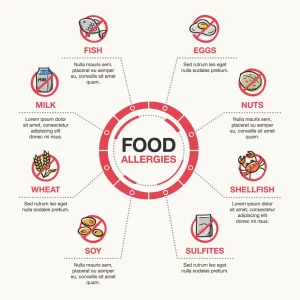
- Lactose intolerance: Food intolerances occur when your digestive system has trouble breaking down and digesting certain foods, such as milk. If you are intolerant to lactose or gluten, you may experience symptoms like abdominal pain, gas, bloating, constipation, and diarrhea.
- Mild food poisoning: Food poisoning occurs after eating or drinking something that has been contaminated by certain bacteria or germs such as campylobacter, salmonella, Escherichia coli (E. coli), and norovirus. Stomach pain, vomiting, diarrhea, low-grade fever, chills, and a loss of appetite are common symptoms of mild food poisoning.
Although these are less serious causes of stomach pain, you should seek immediate medical attention if your symptoms are acute or persistent. Indeed, severe food poisoning can lead to dehydration and kidney damage, while certain food allergies can trigger life-threatening complications like anaphylactic shock.
More Serious Conditions Associated With Stomach Pain In The Area
Although pain in the stomach is common, it should not be overlooked – especially when it is recurring or persistent. According to estimations, 1 in 10 people who experience pain in the stomach suffer from acute or potentially life-threatening diseases like diverticulitis and appendicitis.
In some cases, chronic pain in the stomach may also be a symptom of another underlying condition that requires specialized treatment. Below, we’ll look at the most common ones.
Metabolic Dysfunction
Metabolic dysfunction refers to disorders of the metabolism. Metabolism refers to all of those processes and chemical reactions involved with breaking down the nutrients in the foods you eat – such as protein, carbohydrates, and fats – to create and store energy, in the form of acids and sugars.
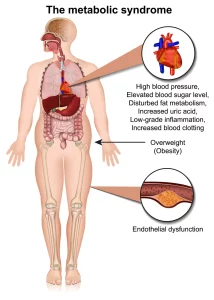
If your body is unable to digest foods as normal, you may experience symptoms such as high blood pressure, high levels of triglycerides in the blood, high blood sugar, and a larger waistline. These health conditions are directly linked to an increased risk of complications like cardiovascular disease, diabetes, and chronic fatigue. However, impaired metabolic processes also impact how the food is broken down and digested, which can lead to symptoms like indigestion, constipation, diarrhea, and stomach pain.
Irritable Bowel Syndrome
Irritable bowel syndrome – or IBS – impacts the function of the stomach and intestines, which are the parts of the digestive system known as the gastrointestinal tract. In particular, IBS derives from problems in the gut-brain axis, which is the channel of communication between the central nervous system and the digestive system.
If you have IBS, your body may be unable to correctly digest certain foods and ingredients, which leads to symptoms like bloating, constipation, and diarrhea, as well as changes in the appearance and frequency of bowel movements. Moreover, trapped gas and cramps related to difficult bowel movements can lead to ongoing stomach pain.
In milder cases, the symptoms of IBS can be treated with lifestyle changes and dietary modifications. However, often, IBS is a lifelong condition that needs to be managed in the long term.
According to studies, the abdominal pain, intestinal gas, and bloating associated with irritable bowel syndrome directly correlate to self-perceived lower quality of life.
Gastroenteritis
Also known as “stomach flu,” gastroenteritis occurs when your digestive system is impacted by a bacterial or viral infection. It usually develops through contact with an infected person or due to exposure to viruses like norovirus or rotavirus through the consumption of contaminated foods or drinks.
Gastroenteritis can cause symptoms like stomach cramps, pain, vomiting, diarrhea, and nausea, as well as fever, fatigue, and headaches. Although stomach flu usually resolves itself in a few days, severe cases of gastroenteritis can cause dehydration, severe thirst, blood in stools, and ongoing vomiting. In these cases, you should seek emergency medical care.
Pancreatitis
The pancreas is a long and flat gland in the abdomen, located between the stomach and the spine. This gland is responsible for producing hormones such as insulin and enzymes like amylase, which support digestive processes and help regulate blood sugar levels.
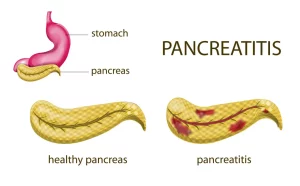
Excessive consumption of alcohol, blockages caused by gallstones, and other forms of injury to the pancreas might trigger the immune system reaction, which causes inflammation. In turn, high levels of inflammation may lead to pancreatitis, a condition that causes redness and swelling in the pancreas. Pancreatitis may be chronic or acute, and it can cause symptoms such as stomach pain that radiates to the back, nausea, vomiting, changes in the heart rate, indigestion, and loss of appetite.
Pelvic Inflammatory Disease
Pelvic inflammatory disease – or PID – is an infection of the female reproductive organs, which can spread through sexually transmitted bacteria to the vagina, uterus, ovaries, and fallopian tubes.
In most cases, the symptoms of PID are mild, hard to recognize, or absent. They include pain in the lower abdomen and pelvis, pain during sex or urination, unusual vaginal discharge, and bleeding from the vagina, as well as fever and chills.
Although PID can easily be treated by seeking prompt medical attention, it can cause scar tissues and abscesses (pockets of fluids) in the reproductive tract if left untreated. These complications can lead to permanent damage to the reproductive system.
How To Know If Your Stomach Pain Is Serious
Stomach pain may occur if you’ve eaten something you are intolerant to or if you’ve been in contact with a person affected by stomach flu. However, as studies report, as many as 10% of patients visiting an emergency department because of abdominal pain have a severe or life-threatening disease that requires immediate medical attention. Because of this, it is essential to know if your symptoms are serious.
Here are some of the signs that you should get in touch with your doctor immediately:
- Hard stomach: An extremely hard or swollen abdomen may be a sign of constipation or IBS, but it can also indicate gastric cancer (a form of cancer of the stomach lining), diverticulitis, or inflammatory bowel disease (IBD).
- Stomach tenderness: Experiencing pain when touching your abdomen may be a sign of internal injuries, infections, and chronic conditions of the digestive tract. Seek immediate care, especially if stomach tenderness is accompanied by vomiting blood, or chest, neck, and shoulder pain.
- Coughing up or vomiting with blood: Vomiting or coughing up blood is a common sign of severe injuries to areas of the respiratory or digestive system. These include stomach ulcers, gastritis, liver disease or liver failure, damage to the esophagus (food pipe), and problems with blood vessels in your lungs. It can also indicate cancers affecting the esophagus, lungs, stomach, or pancreas.
- Non-stop vomiting: Vomiting is associated with several diseases of the digestive system. However, if you are vomiting non-stop, you may be at risk of severe dehydration. Ongoing vomiting may also indicate a life-threatening condition such as concussion, food allergies, gallstones, and appendicitis.
- Bloody diarrhea: Bloody diarrhea requires immediate medical care, as it may be a sign of infection (e.g. E. Coli), inflammatory bowel disease (IBD), peptic ulcers, ulcerative colitis, and ischemic colitis (reduced blood flow to the colon).
- Pain in the chest area or pressure: Chest pain associated with stomach pain may indicate severe injury or disease affecting vital organs such as the intestines and lungs. A study published in 2021 also shows that abdominal pain is a common symptom of heart attacks, acute coronary syndrome, and aortic syndromes.
- Difficulty in breathing: Shortness of breath associated with stomach pain may indicate severe allergic reactions, celiac disease, and anxiety or panic disorders, as well as internal injury and hernia.
- Dizziness: Stomach pain associated with dizziness and fainting should be treated as a medical emergency, as it may indicate blockages or leaks in the intestines, food poisoning, acute pancreatitis, and heart attack.
You should also seek immediate medical care if you experience sudden pain in the right side of your lower abdomen and pain when coughing, as well as nausea, vomiting, and fever. These might be signs of acute appendicitis, a condition that occurs when the appendix becomes inflamed, damaged, or swollen. This is a medical emergency that affects up to 8.6% of the population.
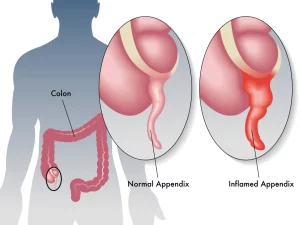
Diagnosing Pain In The Stomach
As we have seen above, pain in the abdomen can be a sign of a range of conditions with overlapping symptoms. This makes diagnosing the causes of stomach pain challenging, and many patients end up receiving an inaccurate diagnosis or being undertreated.
However, doctors may use a range of diagnostic tools to identify the root cause of your pain and rule out other conditions that require more specific care. These tools include:
- A thorough review of the nature, frequency, and location of your symptoms
- A medical examination, which includes palpating (pressing) the abdomen and the pelvis
- An assessment of your medical history
- Imaging tests to help obtain a clear picture of the digestive system, including X-rays, gastrointestinal series (UGI), CT scans, ultrasounds, and MRIs
- Lab tests such as a complete blood count, urine tests, and allergy tests
- Pregnancy tests
It is important to keep in mind that the intensity of your pain isn’t always correlated to how serious its cause is. For example, you may have excruciating stomach cramps due to minor conditions like gas or gastroenteritis, while life-threatening conditions like colon cancer may not cause pain at all. Regular checkups can help you prevent the most severe complications of stomach pain.
At-Home Remedies For Mild Causes
If your stomach pain is caused by something you ate or by intolerance to some foods and drinks, there are easy at-home remedies that you can try to obtain stomach pain relief. These include:
- Drink licorice to reduce gas. Licorice root has antispasmodic properties, thus helping with cramps and bloating. This ingredient can also support the production of saliva, which aids digestion.
- Consume ginger for indigestion. Ginger root tea and supplements can reduce acid reflux, speed up the movement of food through the gastrointestinal tract, and reduce bloating and gas. Studies have also shown that taking ginger regularly can reduce inflammation markers.
- Sip peppermint tea to relax your intestinal muscles. Peppermint tea may reduce heartburn and gas, and ease the symptoms of IBS. A 2018 study on animals also showed that peppermint oil may help relax the muscles in the intestines, ease inflammation, and reduce pain by activating the antipain channel in the colon.
- Incorporate the bananas, rice, applesauce, and toast (BRAT) diet. Originally used to ease the symptoms of an upset stomach in children, the BRAT diet recommends eating easy-to-digest foods that will give the stomach a rest. Today, it is recommended to avoid eating for six hours after experiencing diarrhea or vomiting, then slowly reintroduce clear drinks and mild foods like oatmeal and boiled potatoes. This diet does not provide enough nutrients to be sustainable in the long term, and it should only be adopted during the recovery period after a stomach flu.
- Avoiding difficult-to-digest foods. If your stomach pain is correlated to digestive problems and disorders, you should avoid foods that are harder to digest or that may irritate the gastrointestinal tract. These foods include dairy products, acidic foods, fatty foods, fried ingredients, artificial sweeteners, and processed foods, as well as alcohol, caffeine, and spicy foods.
- Drinking aloe juice. Aloe vera juice may help digestion, ease gastroesophageal reflux, and regulate blood sugar. However, recent research has shown the cancerogenic and toxic effects of ingesting aloe vera. Be sure to consult with your doctor before resorting to aloe juice for stomach problems.
- Avoid consuming food or drinks that may cause allergies or intolerances. If you have been diagnosed with food allergies and intolerances, avoid these foods to prevent adverse reactions.
Conventional Medicine For Moderate To Severe Stomach Pain
If your stomach pain does not subside with home remedies, your doctor may recommend pharmaceutical or surgical treatment avenues. Given the severe side effects and lengthy recovery times involved with these therapies, this isn’t a choice that should be taken lightly or without first obtaining an accurate diagnosis of your condition.
Over-The-Counter (OTC) Medications
Recommended OTC medications depend on the symptoms you are experiencing. For example:
- Pain relievers like acetaminophen (Panadol) may help with generic stomach pain.
- Medicines that contain simethicone may help with gas and gas pain.
- Anti-acid medications like Pepcid can help with heartburn and gastroesophageal reflux.
- Stool softeners or laxatives can help with constipation.
- Drugs that include ingredients like loperamide can help with cramping and diarrhea.
It is important to avoid non-steroidal anti-inflammatories (NSAIDs) when seeking stomach pain relief. Medicines like aspirin or ibuprofen work by blocking cyclooxygenase (COX) enzymes, which are the enzymes responsible for the production of inflammatory chemicals like prostaglandins. However, the COX enzymes also play a role in protecting your stomach lining, and when their production is inhibited, you may be at greater risk of ulcers and damage to the gut.
Surgery
Surgical interventions are considered to be the last resort in the treatment of stomach pain, and they are only efficient in treating a small range of conditions that may lead to abdominal discomfort.
The most commonly used types of surgery include:
- Appendectomy: This surgical intervention is used to remove a diseased appendix in the event of acute appendicitis, and it is carried out following a medical emergency.
- Small bowel resection: This surgery aims to remove part of the small intestine (small bowel), which may be affected by blockages or disease.
- Laparotomy: Laparotomy involves creating a large incision in the stomach area to gain access to the abdominal cavity. It can be used to diagnose conditions that may be impacting the digestive system or to examine diseased organs. A less invasive option to laparotomy is a laparoscopy, which involves performing only a small incision and inserting a thin viewing instrument into the abdomen.
How Neuragenex Neurofunctional Pain Management Approaches Stomach Pain
In most cases, stomach pain is nothing more than a temporary, minor issue that resolves itself in a matter of days. However, new surveys have found that 40% of the US adult population – or 60-70 million Americans – struggle with chronic disorders of the gastrointestinal act. And, to add fuel to the fire, getting a diagnosis and identifying the true cause of abdominal pain remains challenging, thus leading to millions of patients being undertreated for their condition.
Fortunately, there is no longer a need to surrender to stomach pain or face the consequences of invasive surgical procedures. Thanks to the whole-person, non-surgical, and non-drug treatment protocol, Neuragenex Neurofunctional Pain Management – you can tackle the root cause of your stomach disorder and return to living a pain-free life.
The first step is to obtain an accurate diagnosis of your chronic stomach pain from a PCP or gastroenterologist. Once you have a pre-existing diagnosis, as well as the necessary medical records and approval from your primary care physician or specialist, we will design a tailored treatment plan based on the three pillars of Neuragenex Neurofunctional Pain Management: Electroanalgesia, IV Therapy, and Lifestyle Counseling.
Electroanalgesia
Electroanalgesia is a pain management technique that uses high-pulse electrical current to ease pain, boost blood circulation, improve mobility, and induce...
IV Therapy
IV nutritional therapy, or intravenous therapy, involves administering vital nutrients directly to the bloodstream through an IV. This type of treatment bypasses the digestive system, allowing for maximum absorption and utilization of nutrients by the...
Lifestyle Counseling
Lifestyle counseling is an approach to managing chronic pain that involves identifying, assessing, and modifying lifestyle factors contributing to an individual's pain. For example, lifestyle factors such as nutrition, physical activity, stress, sleep quality...
We Manage Stomach Pain-Related Conditions

Irritable Bowel Syndrome Pain Treatment
Irritable Bowel Syndrome (IBS) is a common condition that affects the stomach, intestines, and digestive system. Although sometimes mild, the chronic disorder can cause painful cramps and bloating, which can be incredibly disruptive for those...

Endometriosis Pain Treatment
Endometriosis is a condition that can cause severe and chronic pelvic pain, heavy menstrual bleeding, and other uncomfortable symptoms. Pain caused by endometriosis can be debilitating and may prevent you from living a full, active life. Fortunately, we offer...
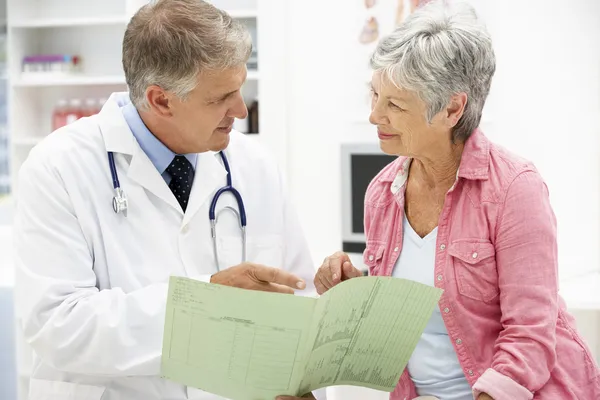
Metabolic Dysfunction Pain Treatment
When your body’s metabolism doesn’t work as it should, you may struggle with a larger waistline, battle gastrointestinal issues, and be at greater risk of developing high blood pressure, heart disease, and diabetes. And, often, metabolic disorders occur...
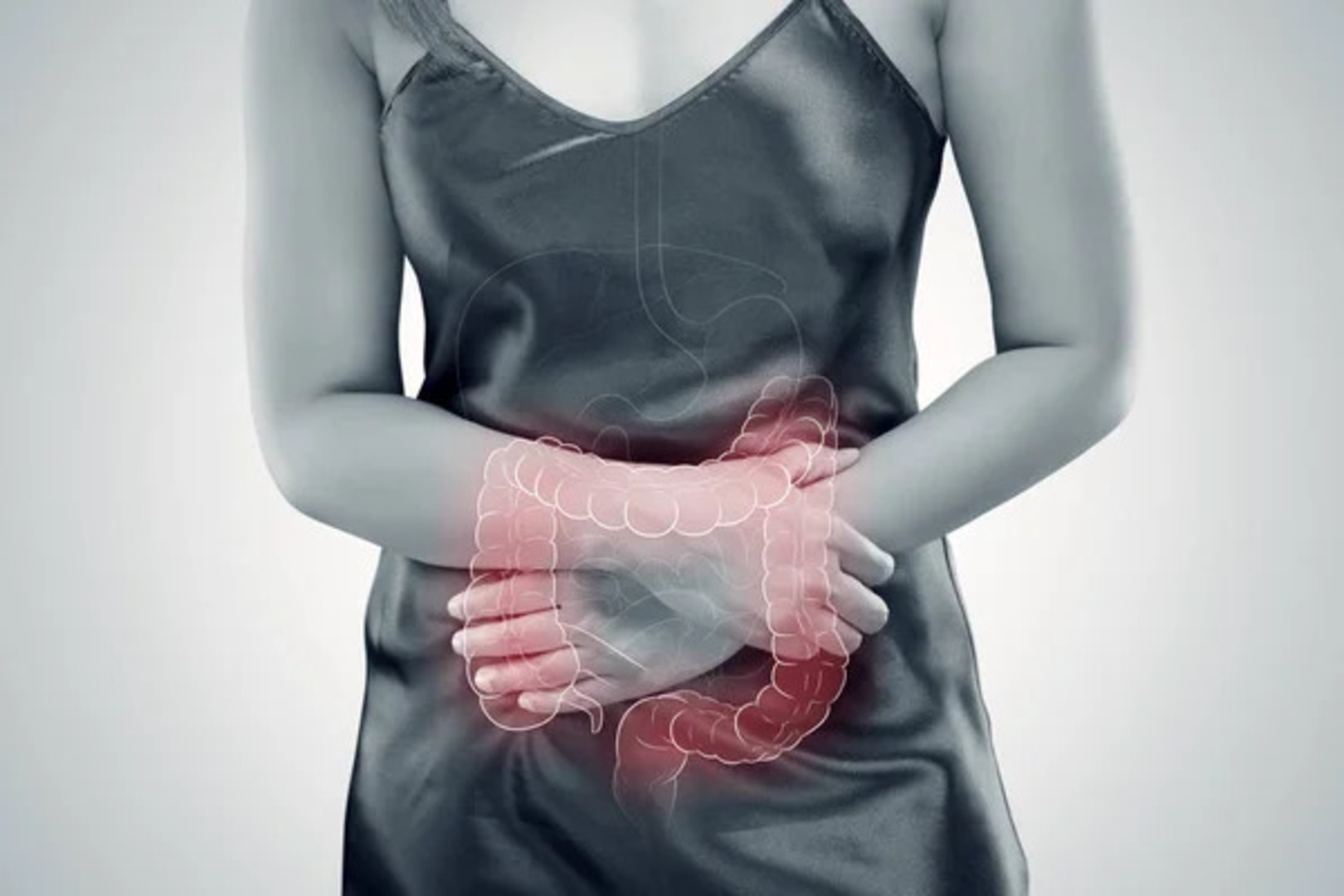
Ulcerative Colitis Pain Treatment
Ulcerative colitis is an inflammatory bowel disease that can lead to painful and disruptive symptoms, including abdominal pain, rectal pain, fatigue, defecation difficulties, and more. The potential severity of these symptoms can have an enormous impact on...
Relieve The Discomfort And Pain In Your Stomach
Stomach pain is common – but it should not be considered a normal part of your life! Thanks to Neuragenex Neurofunctional Pain Management, you can restore your digestive health without surrendering to the side effects of medications or living in fear of needing surgery.
Once you have obtained an accurate diagnosis of your chronic stomach pain and the necessary permission from your PCP or gastroenterologist, Neurofunctional Pain Management can help you tackle the root of your stomach pain and restore the health of your digestive system.
Symptoms of stomach pain may indicate a more severe condition. Contact us to learn more about metabolic dysfunction treatments.




